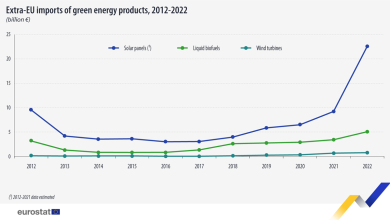Romania and the network codes for the European Gas Transmission System

The overarching goal of the European Third Energy Package and Regulation 715/2009 is the creation of an integrated Internal Energy Market (IEM), implicitly one in natural gas, in order to ensure security of energy supply, to promote competitive energy prices and higher standards of service. A well-functioning, non-discriminatory internal market in gas may be achieved if the conditions for accessing the gas transmission network throughout the EU are harmonised at an EU-wide level, guaranteeing an effective management of the gas flows.
Therefore, in order to secure the fluidity of the cross-border gas transactions, to balance and regulate the cross-border gas transmission network, the European Union has initiated the adoption of strict rules which determine who can use the network, under which conditions, how much capacity can be allocated, to whom, how to solve the congestion problems, how to harness effective and efficient communication between TSOs, how is the transmission activity priced. These rules are known by the name of ‘Network Codes’ (NCs).
According to Article 6(1) of EU Regulation 715/2009, the areas in which the NCs are issued are a component part of an Annual Priority List, issued by the European Commission (EC). Upon that list, the Agency for the Cooperation of Energy Regulators (ACER) drafts Framework Guidelines which contain the general principles of the future NC. Then, the document is sent to the European Network of Transmission System Operators for Gas (ENTSOG). ENTSOG will come up with the original text of the NC and will send text to ACER, for its opinion. After issuing the opinion, ACER forwards the document to the EC, recommending adoption (or not) in the Comitology procedure, with the approval of the Council of the EU and of the European Parliament.
The NCs currently in place throughout the EU are the following: Gas Balancing of the Transmission Networks (BAL NC); Capacity Allocation Mechanism (CAM NC); Congestion Management Procedures Guidelines (CMP GL); Interoperability and Data Exchange (IO&DE NC). In the near future, the NC on Harmonised Transmission Tariffs Structures for Gas (Tariffs NC) will enter into force this year.
Importance of the Network Codes
- The Balancing rules have been designed to uphold the creation of a short-term wholesale gas market by trading cross-border gas in an interactive, swift and easy manner on a so-called Trading and/or Balancing Platform. In addition, these rules envisage the financial incentivising of the network users, to balance their daily imbalanced positions via cost-reflective charges. EU MS were grouped into 3 implementation clusters, according to their implementation date: 2015, 2016 and 2019. Specifically, the 2015 cluster (such as, UK, France, Denmark) successfully enabled the short-term market, while the 2016 cluster (such as, Italy, Spain, Portugal) are making valid progress towards it. On the other hand, the 2019 implementation cluster (such as, Romania, Greece, Bulgaria) has made little progress.
- CAM aims at ensuring equal and transparent access to all network users to the gas infrastructure, by laying down rules regarding the cross-border capacity allocation in the day-ahead and within day market, whereas Congestion Management Procedures, applied at Interconnection Points (IPs), envisage finding a solution for the contractual congestion the TSOs are faced with, by bringing unused capacity back to the market to be reallocated in the course of the regular allocation process. The NC on CAM was applicable as of November 1st 2015, whereas the CMP Guidelines came into force on August 24th On the other hand, the technical aspects, such as rules for flow control, gas quality and odourisation or the common data exchange standard used by NUs and TSOs are dealt with in the Interoperability and Data Exchange Network Code. The Code entered into force on May 1st 2016.
- Tariffs NC establishes the requirements for publishing the information related to the method in which the revenues of the TSOs, for performing gas transmission/non-transmission activities, are calculated. The entry into force of this NC spans from April 2017 until 2023. The implementation of the NC will be done in various stages.
Due to the fact that the Network Codes are adopted through EU Regulations, the provisions become part of the national law, automatically. Hence, the EU MS must apply them and comply with their provisions. Nonetheless, upon Article 8(7) of Regulation 715/2009, the adoption of these European-wide NCs ‘shall not prejudice, under any condition, the Member States’ right to create their own NCs which do not affect cross-border trade’.
The EU scenery in what concerns BAL, CAM and CMP NCs’ implementation is a bit diverse. While Western Europe seems to be more proactively engaged in the transformation of their national systems and aligning them towards the creation of a sustainable IEM, Eastern Europe is lagging behind.
More specifically, the Romanian NCs’ implementation design reveals the following:
For Balancing: Romania is part of the 2019 implementation cluster. This means that until 2019, Romania has chosen to use Interim Measures, to ensure o smooth transition to a balanced transmission network. Basically, nowadays, Romania does not have a Virtual Trading Point in place, which is one of the most fundamental enablers of the short-term wholesale market. Specifically, in order for the short-term wholesale market to function, the gas transfer between two users shall be made through trade notifications, submitted to the TSO, in respect of that gas day. According to ACER’s Implementation Monitoring Report (published in October 2016), there is no evidence towards the use of trade notifications within-day, containing the date and quantity of gas expressed in kW/h.
Romania, along with other 2019 clusters (Bulgaria or Greece) should work towards the introduction of a proper Trading/Balancing platform, in order to avoid future infringement procedures initiated by the EC, which could be thoroughly substantiated by the slow progress of the TSO in stimulating the market.
In what concerns CAM: Romania estimates to fully apply the CAM auctions starting with January 1st 2017, for all the IPs sides situated on Romanian territory. And, finally, when it comes to CMP, Romania has been identified to be affected by ‘contractual congestion’ at its IP with Bulgaria. According to article 2(21) of Regulation EU 715/2009, contractual congestion is defined as the situation in which the level of firm capacity (gas transmission capacity contractually guaranteed as uninterruptible by the TSO) demand exceeds the technical capacity of the network. It is important to highlight the difference between contractual and physical congestion, which represents the situation where the level of demand for energy exceeds the technical capacity of the pipeline, at a specific point in time, according to Article 2(23) of Regulation 715/2009. While physical congestion could be solved by actual infrastructure investments or flow commitments among TSOs, the contractual congestion, including at the Romanian-Bulgarian IP, could be solved by positively implementing one of the four congestion management procedures, dealt with in Article 2.2 of CMP Guidelines: Over-Subscription and Buy Back (OSBB), Firm Day-Ahead Use-it-or-lose it (FDA UIOLI), Long term use-it-or-lose-it (LT UIOLI) and surrender of contracted capacity. The application of each of these mechanisms is determined by specific rules laid out in Commission Decision of 24 August 2012 on amending Annex I to Regulation (EC) no 715/2009. However, the most common ones are OSBB and FDA UIOLI. The latter should have been applied to the congested IPs by July 1st 2016. Up to now, there is no record of LT UIOLI being used in order to tackle congestion.
Conclusions
The role of the NCs is fundamental when it comes to the establishment of the IEM and regulation of cross-border gas transmission and trade. Each NC is very technical and targets a certain area of the transmission network, in order to ascertain unhampered gas flows throughout the EU gas market. Some Member States are more advanced in the implementation of the NCs than others. Unfortunately, Romania lags behind in the implementation of almost all NCs, either due to the lack of resources or necessary infrastructure. However, its willingness to cooperate with other members of the South-East Gas Regional Initiative on a voluntary basis shows interest into developing a future liquid and open gas market, which could be easily integrated and relied upon into the Internal Energy Market.
Note: For the purposes of this written piece, according to Article 2(1) of Regulation (EC) No 715/2009 of the European Parliament and of the Council of 13 July 2009 on conditions for access to the natural gas transmission networks (Regulation 715/2009), ‘transmission’ represents the transportation of natural gas through a network, usually high-pressure pipelines, other than an upstream pipeline or a gas distribution pipeline. Transmission System Operator (TSO) represents the company which ensures gas transportation through a fixed network, whereas the Network User (NU) might be a company with a diverse portfolio, such as a shipper, a trader, a company aspiring to obtain access to the gas transmission network. In Romania, the gas TSO is Transgaz.






